Published: 03/14/2025 via Crop Protection Network
DOI: doi.org/10.31274/cpn-20250317-1
CPN-1018-24
Soybean diseases reduce yield in North America each year. The importance of these diseases varies annually as many factors influence which diseases can have the greatest impact on yield. These factors can include environment, production practices, and variety susceptibility to disease.
The current publication provides the estimated annual soybean yield losses due to soybean diseases during the 2024 season for the major soybean-producing areas in the United States and Ontario, Canada. Extension, university, USDA plant pathologists, and/or soybean specialists from each state and province provided the estimates. These reports accounted for 99.9 percent of the total soybean production in the United States and 100 percent of production from Ontario in 2024. The estimated losses include those caused by foliar diseases, stem diseases, nematodes, seedling blights, and diseases of harvested grain.
Disease loss estimates are gathered using several methods that typically include disease surveys; interactions with Extension, university, government, industry, and farmer representatives; and personal experience with disease losses. Estimation methods vary by state or province.
Values for soybean disease losses are based on yield beforeestimated losses occurred for each state or province and are determined using the formula (harvested bushels/[/100]). Next, the formula ([percent loss/100] × yield before estimated loss) is used to determine bushels lost for each participating state or province. Additional information on yield and economic losses due to soybean diseases can be found at the CPN Field Crop Disease Loss Calculator.
2024 Production
The United States produced nearly 4.4 billion bushels of soybean in 2024, which is 233.6 million bushels greater than the average of the previous five years (Figure 1). Ontario, Canada, produced 160.0 million bushels in 2024.
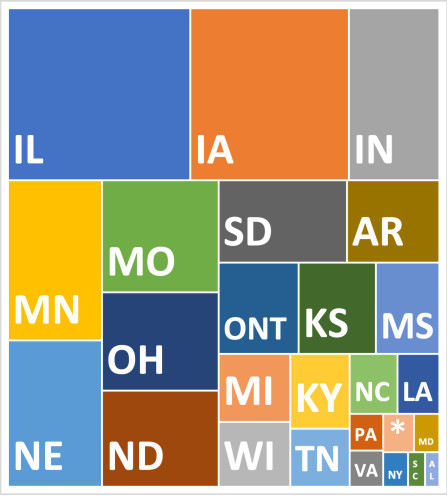
Figure 1. Proportion of 2024 soybean production by state or province for the 29 U.S. states that participated in this survey, as well as Ontario, Canada (ONT). This figure represents approximately 99.9 percent of the 4.5 billion bushels of soybean produced across the entire U.S. and in Ontario, Canada. *DE, GA, OK, TX, and FL production combined.
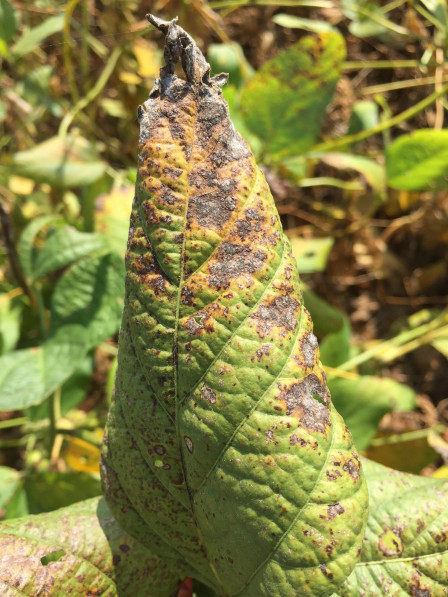
Figure 2. Cercospora leaf blight was estimated to have caused 3.2 million bushels of soybean yield losses in the United States in 2024, ranking the greatest among foliar diseases of soybean. Trey Price, LSU AgCenter
2024 Disease Losses
In all, an estimated 5.4% (250.9 million bushels) of the potential soybean production in 2024 was lost due to disease in the 29 soybean-producing U.S. states, and 5.7% (9.6 million bushels) of the total soybean production in 2024 were estimated to be lost due to disease in Ontario, Canada. Table 1 provides yield loss estimates for the specific diseases throughout the soybean production system in the U.S. and Ontario, Canada, and Figure 3 compares the proportion of losses caused by major diseases. The 2024 estimated losses from soybean disease in the U.S. are the fifth lowest observed out of 29 years of available data, with only 2019, 2020, 2022, and 2023 being lower. In Ontario, 2024 yield losses were nearly the same as in 2023 but were approximately 2.3 million bushels less than the average of the previous five years.
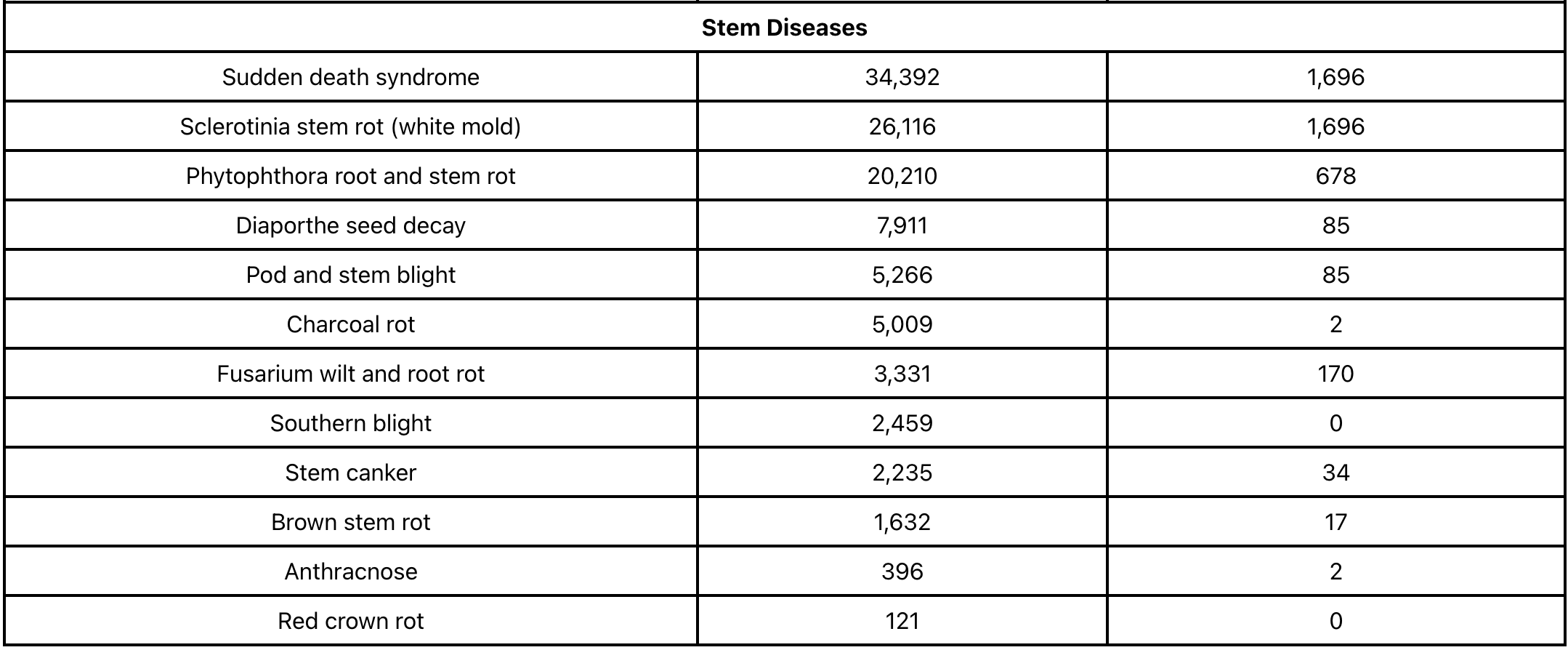
Table 1. Estimated soybean yield losses from diseases in 29 soybean-producing states in the United States and Ontario, Canada, in 2024, listed in order of most to least losses in each disease category. 1Lance, spiral, sting, and stubby root; 2Soybean mosaic and soybean vein necrosis.
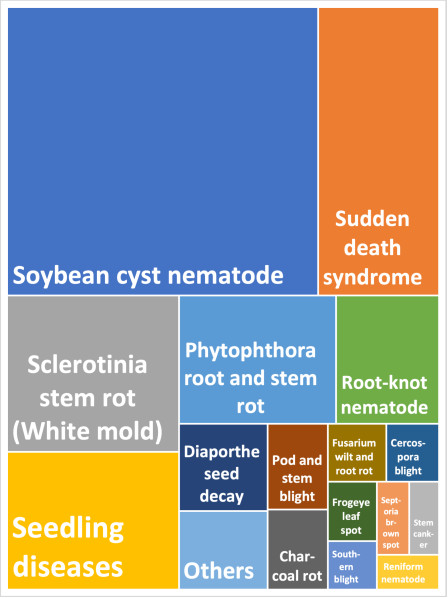
Figure 3. Proportion of estimated losses for the most problematic diseases across 29 U.S. states and Ontario, Canada in 2024. This figure represents 260.5 million bushels of soybean yield reduction. The "Others" category includes all diseases in this survey not represented individually.
Diseases in the Northern United States
The northern states in the U.S., which include Illinois, Indiana, Iowa, Kansas, Michigan, Minnesota, Nebraska, New York, North Dakota, Ohio, Pennsylvania, South Dakota, and Wisconsin, accounted for 76.4 percent of the total estimated U.S. yield losses in 2024. Because more than three-quarters of U.S. soybean production occurs in the northern states, disease losses in these states greatly affect the overall importance of different diseases across the country (see Table 2). From 1996 through 2018, the average annual estimated loss due to disease was 348.0 million bushels; the average annual loss from 2019 through 2023 was 164.9 million bushels. The trend of reduced estimated losses due to soybean diseases continues in 2024, with an estimated 191.6 million bushels lost. Dry conditions in certain soybean production areas in 2024, and in the previous four years, likely resulted in less disease loss than typically observed in the northern region. There were no foliar diseases among the top yield-reducing diseases in 2024 for the northern region.

Table 2. Estimated soybean yield losses due to the five most significant diseases in the northernmost states in 2024.
Diseases in the Southern United States
Similar to what was observed in the previous two years, soybean cyst nematode and root-knot nematode caused the most estimated yield losses in 2024 in the southernmost U.S., which includes Alabama, Arkansas, Delaware, Florida, Georgia, Kentucky, Louisiana, Maryland, Mississippi, Missouri, North Carolina, Oklahoma, South Carolina, Tennessee, Texas, and Virginia (see Table 3).

Table 3. Estimated soybean yield losses due to the five most significant diseases in the southernmost states in 2024.
Diseases in Ontario, Canada
Soybean cyst nematode, sudden death syndrome, and Sclerotinia stem rot caused the greatest estimated yield loss in Ontario, Canada, in 2024, followed by seedling diseases and Phytophthora root and stem rot (see Table 4). This list mirrors that of the northern region of the U.S., with no foliar diseases present among the top causes of disease-related yield loss estimates in Ontario, Canada.

Table 4. Estimated soybean yield losses due to the five most significant diseases in Ontario, Canada, in 2024.
Disclaimer
The yield losses estimated in this publication were provided by members of the North Central Research and Extension Activity (NCERA) 137 Soybean Disease Committee and the Southern Soybean Disease Workers. The information contained in the current publication is meant to be used as a guide. The values in this publication are estimates and are not intended to be used as exact measurements of soybean yield losses due to plant diseases. However, these data provide valuable insight into the ranking of importance of a given disease within a production region (north or south), as well as across the entire production system. The most appropriate means available were used to estimate disease losses and no liability resulting from the use of these estimates is assumed.
Additional information on yield and economic losses due to soybean diseases can be found at the CPN Field Crop Disease Loss Calculator.
Acknowledgments
Data Compilers
Tom Allen, Mississippi State University; Daren Mueller, Iowa State University; and Adam Sisson, Iowa State University
Authors
Ed Sikora, Auburn University; Travis Faske and Terry Spurlock, University of Arkansas; Alyssa Betts, University of Delaware; Nick Dufault and Zane Grabau, University of Florida; Bob Kemerait, University of Georgia; Boris Camiletti, University of Illinois; Darcy Telenko, Purdue University; Daren Mueller and Adam Sisson, Iowa State University; Rodrigo Onofre, Kansas State University; Carl Bradley, University of Kentucky; Boyd Padgett, Trey Price, and Tristan Watson, Louisiana State University; Marty Chilvers, Michigan State University; Dean Malvick, University of Minnesota; Tom Allen, Mississippi State University; Mandy Bish, University of Missouri; Dylan Mangel, University of Nebraska; Gary Bergstrom, Cornell University; LeAnn Lux, North Carolina State University; Febina Mathew and Wade Webster, North Dakota State University; Horacio Lopez-Nicora, The Ohio State University; Maira Duffeck, Oklahoma State University; Albert Tenuta, Ontario Ministry of Agriculture, Food and Agribusiness; Alyssa Collins and Paul Esker, Pennsylvania State University; John Mueller and Michael Plumblee, Clemson University; Madalyn Shires, South Dakota State University; Heather Kelly, University of Tennessee; Tom Isakeit, Texas A&M University; David Langston and Yuan Zeng, Virginia Tech; and Damon Smith, University of Wisconsin-Madison.
Reviewers
Alison Robertson, Iowa State University and Kiersten Wise, University of Kentucky.
Production data from the United States Department of Agriculture-National Agriculture Statistics Service, Farm Service Agency, Statistics Canada, and direct state representative communication when data was unavailable elsewhere.
United States Department of Agriculture National Agricultural Statistics Service. Quick Stats Database. Accessed 21 and 24 January 2025.
United States Department of Agriculture Farm Service Agency. 2024 acreage data as of January 2, 2025. Accessed 21 January 2025.
Statistics Canada. Table 32-10-0359-01 Estimated areas, yield, production, average farm price, and total farm value of principal field crops in metric and imperial units. Accessed 21 January 2025.
Sponsors
The authors thank the United Soybean Board and the Grain Farmers of Ontario through the Sustainable Canadian Agricultural Partnership (Sustainable CAP), a federal-provincial territorial initiative, for their support. Support was also provided by State and Federal Funds appropriated to the State Land Grant Institutions of cooperating authors and the United States Department of Agriculture – National Institute of Food and Agriculture (USDA-NIFA).

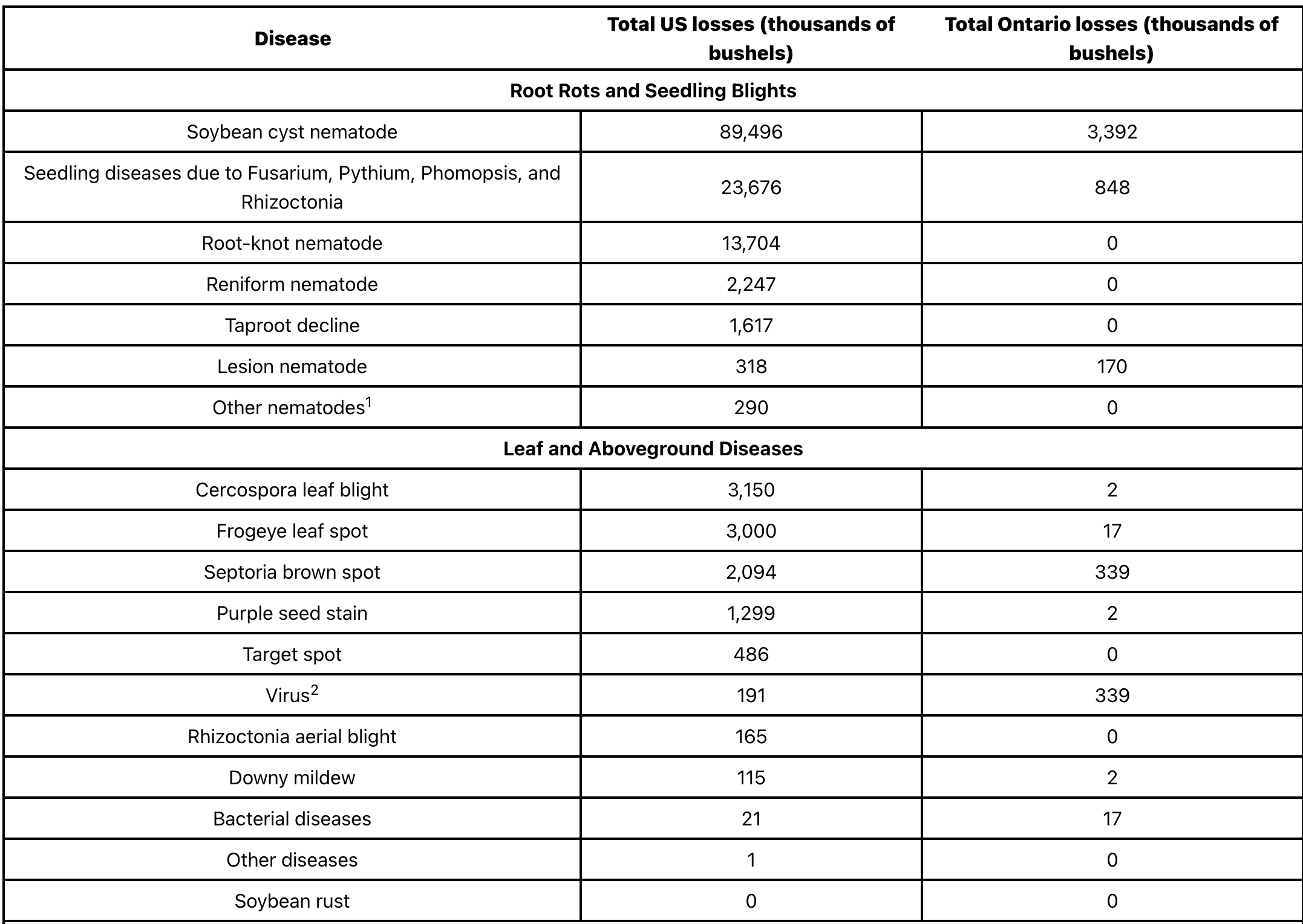

 and then
and then